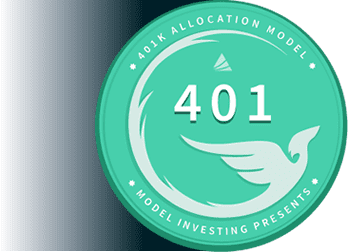Browse our FAQ below to see answers to commonly asked questions.
For instructions on how to use the ARM, please see the tutorial
Find out more about the cost of membership
-
What is the 401(k) Allocation Model?
The 401(k) Allocation Model (401) is our premier Investment Model for 401(k) investors. It’s designed to provide a complete portfolio management solution for people investing through their employer-sponsored 401(k) plans.
-
How does the 401(k) Allocation Model work?
The 401 Model dynamically switches between various stock and bond funds to achieve outstanding returns while exposing your portfolio to significantly less risk than traditional investment approaches. Learn More
-
Who should use the 401(k) Allocation Model?
Anyone who invests through a 401(k) plan will benefit from following the 401(k) Allocation Model. The 401 Model will help you keep your investments in sync with changing market conditions.
-
What role should the 401 Model play in my overall portfolio?
The 401 Model is a complete portfolio management solution, designed to manage your entire 401(k) account. If you’re new to Model Investing, consider using it for only a portion of your account to get started. As you become more confident in the 401 Model’s performance, you can begin using it to manage your entire account.
-
Where can I see the 401 Model’s historical performance?
You can view the 401 Model’s historical backtested performance here. Pay special attention to the table of risk metrics, it’s important to understand that the 401 Model’s outperformance does not come as a result of taking on more risk. In fact, the 401 Model exposes your money to significantly less risk than traditional investment approaches.
-
How does the 401 Model achieve such high performance?
The 401 Model uses a completely different approach to investing than traditional portfolio management. Instead of splitting your money between stocks and bonds and staying invested regardless of market conditions, the 401 Model tracks the performance of several stock and bond funds and allocates the portfolio accordingly, transitioning between funds as they take turns leading the way higher. Learn More
-
Where can I see the latest 401 Model recommendations?
You can see the latest 401 Model recommendations here. Access requires a premium subscription.
-
How do I use the 401 Model?
Using the 401 Model is easy, but it’s a bit more complicated than our other Investment Models. The first step is determining which funds in your specific 401(k) plan line up best with the funds in the 401 Model. Don’t worry, you only have to this once, and we can even do it for you! Then, each month you will receive an alert when the latest 401 Model recommendations have been posted. Simply log in to your 401(k) account and make the appropriate changes to your allocations. Learn More
-
I’m already retired, can I still use the 401 Model?
Yes. People are living longer these days and it’s important that your money continues to work for you during retirement. Because the 401 Model has been able to generate higher returns than both stocks and bonds, and also avoid major losses during market crashes, we feel comfortable recommending it to investors of all ages. For more information on how to de-risk your portfolio during retirement, please see this article.
-
Will I incur transaction costs while using the 401 Model?
In general, no. Your 401(k) plan should allow you to make changes to your investment allocations free of charge as long as you do not violate your plan’s excessive trading policy. You should research your specific plan’s policy regarding this before beginning to use the 401 Model. Learn More
-
What happens to the 401 Model if the stock market crashes?
The 401 Model is able to recognize developing periods of stock market weakness and will typically move the portfolio to bonds during the early stages of a crash. This limits losses and is one of the primary benefits of the 401 Model. When the stock market begins to recover, the 401 Model will move back into stocks.
-
Does the 401 Model use target date funds?
No. The 401 Model does not use target date funds. Model Investing recommends that all investors avoid using target date funds due to their inherent problems.
If you have additional questions that are not listed please reach out to us
Contact us
